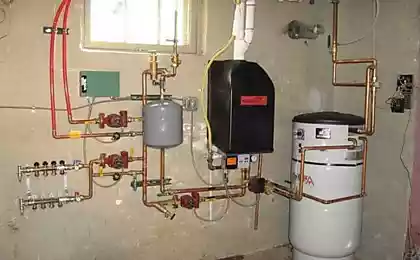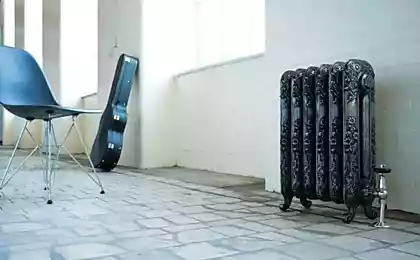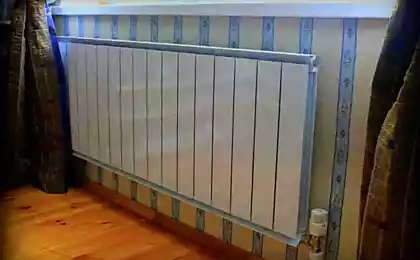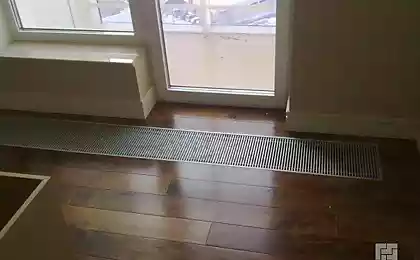629
Cast iron radiators are not forgotten old
Cast iron radiators is almost ideally suited to work in a centralized heating system. They are sufficiently resistant to corrosion. Moreover, not only during the period when the batteries are filled with coolant, but also when they are empty. During warmer months, the fluid from the system is drained, which creates favorable conditions for the development of corrosion. Steel radiators, for example, can not tolerate this. Cast iron can withstand up to 150 degrees Celsius, which allows the use of batteries not only in water, but steam and heating systems. The material is not picky and coolant quality.
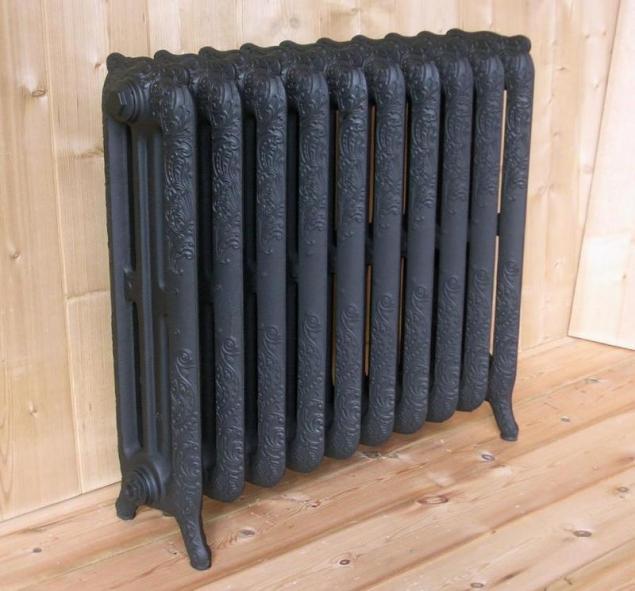
The water circulating in the heating system, often far from ideal. It always contains a variety of chemical compounds, rust particles and other dirt. All of them do not have a significant impact on the internal surface of the cast iron radiators. They do not appear scratches and destruction of homes, which is not true of aluminum or steel batteries. Moreover, even a number of deposits on the walls does not usually become an obstacle to the normal circulation of the coolant channel cross section as is usually performed sufficiently large.
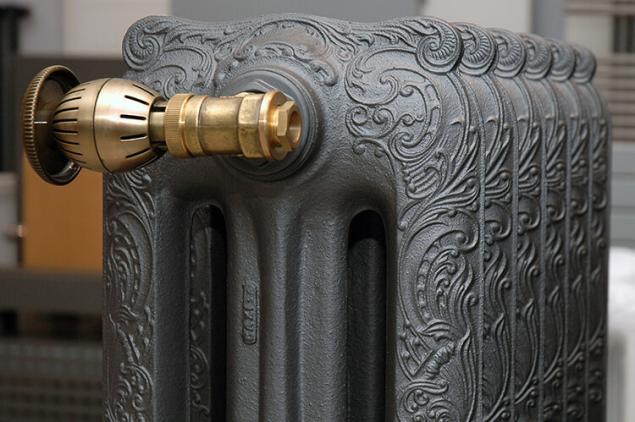
Cast iron has a high heat storage capacity, which allows it to retain heat for a long time, and pass it on to the premises. If we compare it with aluminum or steel radiators of these metals hour after disconnection have residual heat 15%, whereas the amount of iron is greater than 30%. Thus, the cast iron radiator will help neutralize the most unpleasant consequences of short-term blackouts heating. At the same time the service life of such products is very long lasting, much more than the competition. With proper operation and regular maintenance work, the battery of cast iron will last more than 50 years.
Another unquestionable advantage of radiators - low cost in comparison with the devices of other alloys. Especially noticeable savings will, if I am not one battery, and all at once.
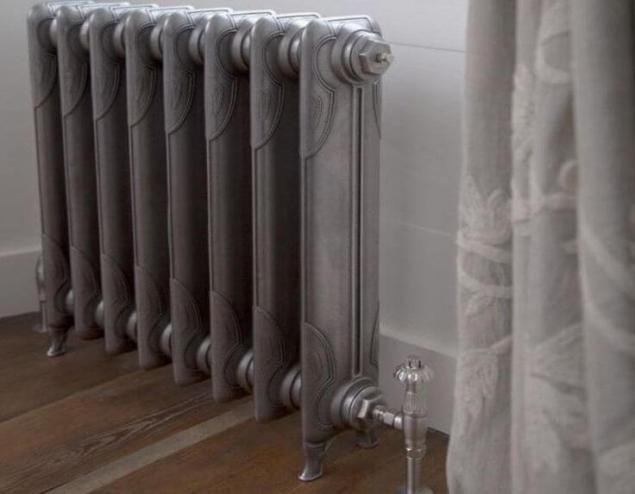
However, there is iron and significant disadvantages. That they make, often consider buying products from other metals. First of all, it is a relatively low operating pressure. Iron can not withstand more than 15 atm, whereas the bimetallic devices, for example, handle and 40 atm. Fortunately, the case in the central heating systems, water hammer is rarely dangerous to iron.
Another negative feature of such radiators - high weight. On 1 kW of heat from the cast-iron batteries for about 45 kg, which is far superior to steel or aluminum. With the massive problems associated with the transportation and installation of equipment. Older batteries often have a complex shape interdivisional space, which significantly hindered their clean from dust and dirt. In addition, low heat output, which is considered the dignity of cast iron, and can be interpreted as a lack of it. These radiators are heated for a long time and are resistant temperature adjustments.
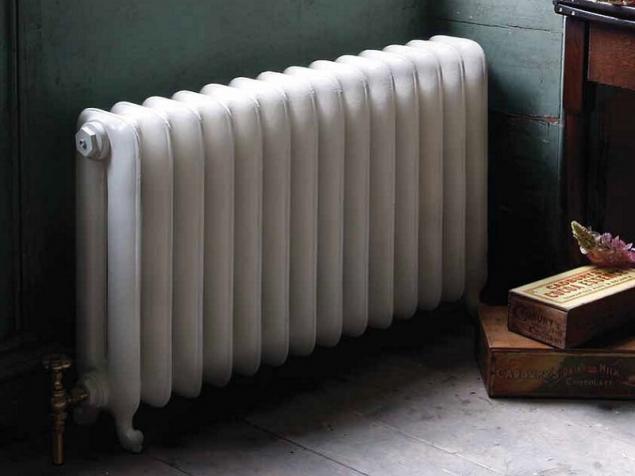
All the shortcomings of the old type of cast iron batteries were studied by specialists, who have tried to neutralize as much as possible in their new versions radiators. First of all, it was possible to increase the maximum coolant pressure. Now devices more resistant to water hammer. Increased cross-section of the internal channel, which allows the batteries to function normally, even with deposits of limescale. Most designers worked. A lot of criticism has been on unpresentable appearance and rough surface of the old-style cast-iron battery. New radiators can be of different sizes and shapes.
The most in demand, sectional model, which consist of several elements. Their number is determined by the desire of the owner. If necessary, can be replaced spoil section or repair. Form sectional radiators thought out so as to best facilitate the care of the instrument and does not violate his heat.
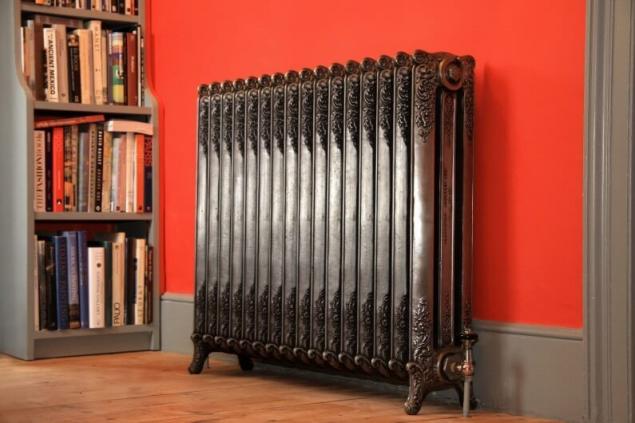
This furor made of cast iron radiators, stylized antique. They have a special shape, decorated with art casting and equipped with a special valve. These products have become a real decoration of the interior.
Decorative cast iron radiators are available in different sizes. They may have a small volume, that they can be placed in the room with a small window sill recess. Another innovation - the presence of the legs, which is installed battery. Thus, there is no need for time-consuming installation equipment to a wall. They just put on the floor and connected to the heating system.
As practice shows, the cast iron radiators are practical, durable and do not corrode, and their low heat output can be compensated by a competent selection of the number of working sections. They will be in demand for a long time, especially the design model, characterized by an unusual appearance.

The water circulating in the heating system, often far from ideal. It always contains a variety of chemical compounds, rust particles and other dirt. All of them do not have a significant impact on the internal surface of the cast iron radiators. They do not appear scratches and destruction of homes, which is not true of aluminum or steel batteries. Moreover, even a number of deposits on the walls does not usually become an obstacle to the normal circulation of the coolant channel cross section as is usually performed sufficiently large.

Cast iron has a high heat storage capacity, which allows it to retain heat for a long time, and pass it on to the premises. If we compare it with aluminum or steel radiators of these metals hour after disconnection have residual heat 15%, whereas the amount of iron is greater than 30%. Thus, the cast iron radiator will help neutralize the most unpleasant consequences of short-term blackouts heating. At the same time the service life of such products is very long lasting, much more than the competition. With proper operation and regular maintenance work, the battery of cast iron will last more than 50 years.
Another unquestionable advantage of radiators - low cost in comparison with the devices of other alloys. Especially noticeable savings will, if I am not one battery, and all at once.

However, there is iron and significant disadvantages. That they make, often consider buying products from other metals. First of all, it is a relatively low operating pressure. Iron can not withstand more than 15 atm, whereas the bimetallic devices, for example, handle and 40 atm. Fortunately, the case in the central heating systems, water hammer is rarely dangerous to iron.
Another negative feature of such radiators - high weight. On 1 kW of heat from the cast-iron batteries for about 45 kg, which is far superior to steel or aluminum. With the massive problems associated with the transportation and installation of equipment. Older batteries often have a complex shape interdivisional space, which significantly hindered their clean from dust and dirt. In addition, low heat output, which is considered the dignity of cast iron, and can be interpreted as a lack of it. These radiators are heated for a long time and are resistant temperature adjustments.

All the shortcomings of the old type of cast iron batteries were studied by specialists, who have tried to neutralize as much as possible in their new versions radiators. First of all, it was possible to increase the maximum coolant pressure. Now devices more resistant to water hammer. Increased cross-section of the internal channel, which allows the batteries to function normally, even with deposits of limescale. Most designers worked. A lot of criticism has been on unpresentable appearance and rough surface of the old-style cast-iron battery. New radiators can be of different sizes and shapes.
The most in demand, sectional model, which consist of several elements. Their number is determined by the desire of the owner. If necessary, can be replaced spoil section or repair. Form sectional radiators thought out so as to best facilitate the care of the instrument and does not violate his heat.

This furor made of cast iron radiators, stylized antique. They have a special shape, decorated with art casting and equipped with a special valve. These products have become a real decoration of the interior.
Decorative cast iron radiators are available in different sizes. They may have a small volume, that they can be placed in the room with a small window sill recess. Another innovation - the presence of the legs, which is installed battery. Thus, there is no need for time-consuming installation equipment to a wall. They just put on the floor and connected to the heating system.
As practice shows, the cast iron radiators are practical, durable and do not corrode, and their low heat output can be compensated by a competent selection of the number of working sections. They will be in demand for a long time, especially the design model, characterized by an unusual appearance.
14 signals that the blood sugar level is very high
50 phrases that are sure to need to talk to your children!

